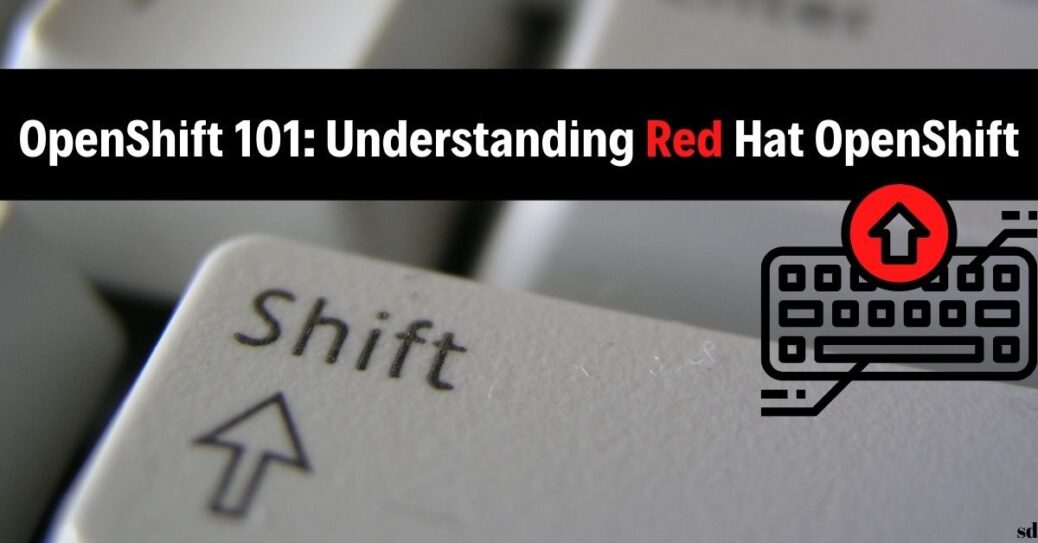OpenShift 101: Understanding Red Hat OpenShift
Containers are one of the most fundamental components of cloud computing technologies. You may ask what is Openshift and its relevance to cloud technology. The Red Hat OpenShift product is a platform prepared for the distribution and management of Containers. It provides many benefits to corporations in terms of operation, production, human resources, equipment, and financials (also look at Openshift vs Kubernetes). Now’s commercial life moves considerably more quickly than it did in the past, and many of the things we can accomplish today were just a fantasy a few years ago. Modern technology, open source communities, and innovative forms of cooperation are propelling the development and implementation of groundbreaking business concepts.
Table of Contents
What is Red Hat Openshift?
The ability to create a product that has consumer value and makes a difference with an original concept exists now for any institution doing business everywhere, in any area, and to compete with everyone on an equal basis with this product is available to anybody doing business today. Cloud computing technologies, which allow them to bring their ideas to life fast, are what provide them with this chance. When it comes to translating a concept into value for internal or external clients, how fast you can bring an application to life makes all the difference in the world.
To create and deploy their systems more quickly, companies are using hybrid cloud architectures. Because they make advantage of Microservices and Containers. In order to do this, they must first identify the most appropriate media. The Kubernetes network is built on Red Hat OpenShift, which provides a reliable foundation. It provides enterprises with the capability they want today. Such as hybrid and multi-cloud applications, among other things. Red Hat OpenShift is a platform that empowers corporate software teams to develop and deploy new technologies. It is a component of Red Hat Enterprise Linux. These teams will also benefit from the hundreds of solutions, such as security and scanning, that are available from Red Hat’s many partners.
To summarize, Red Hat OpenShift is an open-source cloud application framework for business application development that is based on the Kubernetes container editor and built on the Docker container platform.
Openshift vs Kubernetes
With the rise of current container-built systems, microservices packaged with their specs and settings are becoming more prevalent in the marketplace. Kubernetes is an open-source framework that allows for the deployment and scaling of such containers at a large scale. It may also refer to a ship’s captain or operator in Greek. Looking at Openshift vs Kubernetes, often known as “k8s” or “k-eights,” makes the process of developing, producing, and scaling containerized software much more efficient.
It provides organizations running a mixed Windows and Linux workflow with a unified and integrated solution the benefits of a generic Kubernetes platform.
In order to provide support for Windows containers, Red Hat OpenShift uses the Windows Machine Config Operator (WMCO), a licensed OpenShift operator developed on the Kubernetes Operator Platform and jointly supported by both Red Hat and Microsoft.
With the exception of project sponsor Google, Red Hat is the leading corporate Kubernetes developer. And the company has transformed hundreds of open source projects into production-ready commercial solutions that are both reliable and secure. One of these platforms is OpenShift. In addition to all of this, Openshift provides application developers with an environment that enables several conveniences for the development of next-generation software. In order to create cloud-based apps and put them into production, a slew of various components are required. These are ranging from application and developer services on the one hand to monitoring tools and services on the other.
How is the security dimension of Openshift vs Kubernetes?
The development and integration of Windows and Linux containers will result in more mobility for developers and end users in the future. They will be permitted to distribute more material whenever and wherever they see fit. Despite this, there are still a number of concerns with container protection. When it comes to business containers, static security procedures are out of the question. The selection of credible sources for reference photos is the first step in ensuring container security. In spite of the fact that you are employing trustworthy files, introducing applications, and making program adjustments will result in the creation of new variables. Whenever you are bringing in external material to create the applications, you must be proactive in your search for security safeguards.
Why virtual machines are different from containers? And benefits:
If you are a systems expert, it might signify one of the following things to you:
In comparison to virtual machines, it is a system that can work at any location, is simple to operate and use in any manner. And the applications execute on a shared kernel.
According to developers, it might meanthe following. It is a software that is simple to use and can be downloaded as a single package. It can be imported into any framework within seconds of being installed.
Alternatively, perhaps new technology will eventually displace virtual machines.
There are certain disadvantages to virtual computers as compared to container technology.
- The most notable Openshift benefit is the need for a particular virtual machine CPU, fixed memory, and high energy use. Consider the advantages of the container aspect. These include acting as a compatibility structure independent of the CPU, RAM, or layer and a shared kernel with minimal resource usage and a shared system.
- With including DevOps culture and Container technology into our operations, the split of duties between Operations and App Developers has become well established in our organization. Virtual machines do not have a lightweight and compact structure.
- However, when we look at the container side of things, the layer of the framework is completely independent of the bottom level. This allows you to run it in whatever environment you wish. The operating system does not matter whether you are running it on your own desktop, on your own server, or in an AWS (Amazon Web Service) environment. This is because the operating system has an independent configuration that does not need dependencies.
What about the future?
All efforts aim to make the internet more integrated, faster, and more seamless.
OpenShift organizes all Red Hat Enterprise Linux and Windows systems with the Windows Config Operator to function as software fundamental components and allows.NET apps, NET Framework applications. And other Windows applications to run as software fundamental components. Red Hat OpenShift Windows containers can work anywhere they are available in the accessible hybrid cloud. Including bare-metal databases, Microsoft Azure, AWS, Google Cloud, and IBM Cloud.
As a result, there will be no need to completely re-architect or build new code. And reduced implementation costs for container-based workloads will be possible in linked IT infrastructures. When attempting to be too flexible, it is important not to lose sight of the security aspect of the situation.
Writing, researching, and learning about project management and tech.










